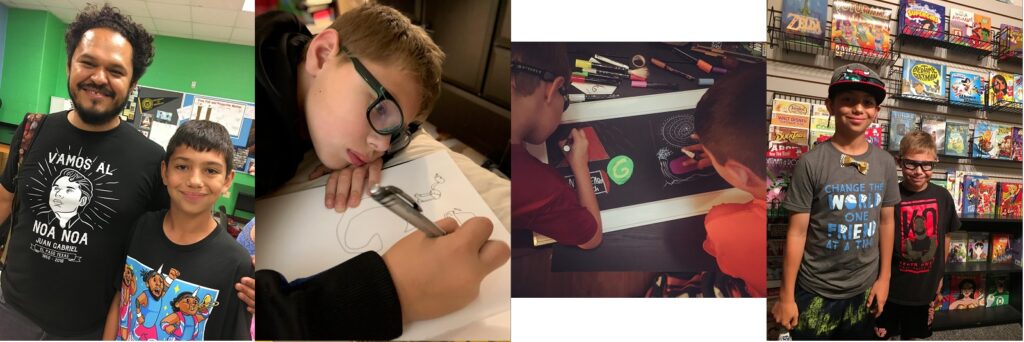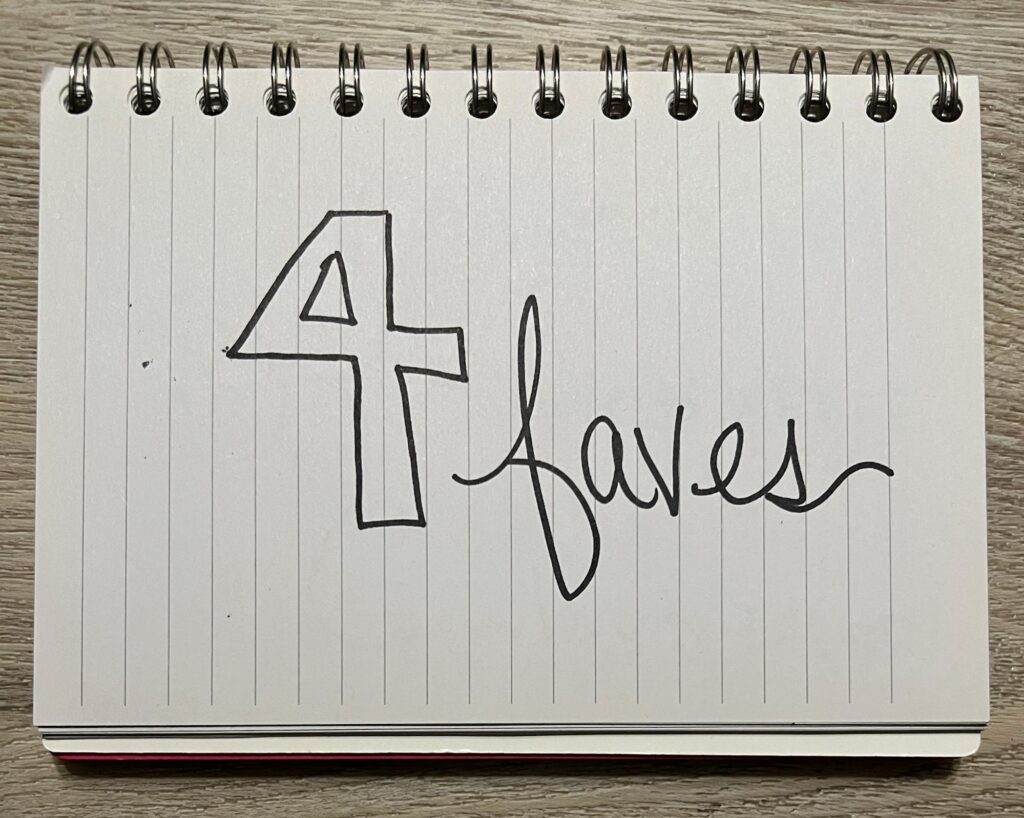This blog post was written by NCTE member Jen Vincent, chair of the Build Your Stack® Committee. This post is part of Build Your Stack,® an NCTE initiative focused exclusively on helping teachers build their book knowledge and their classroom libraries. Build Your Stack® provides a forum for contributors to share books from their classroom experience; inclusion in a blog post does not imply endorsement or promotion of specific books by NCTE.
I love to read and write and learn so it has been important for me to share that with my two sons. Being a mom has stretched me out of my comfort zone in so many ways and definitely when it comes to how I think about reading and writing. My older son is a big fan of graphic novels and my younger son devoured every Dav Pilkey book he could get his hands on. I was a Garfield fan myself growing up and I love to draw and doodle, but my sons’ reading interests impacted me and how I think about the power of drawing and books with drawings in them.

We enjoy visiting comic book shops and meeting creators, like Raúl the Third and Dav Pilkey, who write and illustrate the books my sons love. In our excitement, we started to doodle and draw more ourselves and it helped me explore sketchnoting with students. I’ve been amazed at how much thinking goes into sketchnoting and the deep thinking my students do when they sketchnote. Here are four people whose books have given me ideas and empowered me to sketchnote with students.
Raúl the Third: Raúl the Third’s Lowrider books are all drawn with Bic pens because he wanted to show kids that the resources don’t matter. Just make art. I love looking at his art and learning from him. His books StuntBoy in the Meantime written by Jason Reynolds, and the Vamos! series, along with the Lowrider books, are full of great details to study and explore.
Carrie Baughcum: Carrie Baughcum and her daughter Annabeth started a YouTube event called Doodle and Chat and gave us an easy entry into sketchnoting. It especially helped us during the pandemic but she continues to create and offer ideas to help kids explore sketchnoting. Her two books are awesome resources: My Pencil Made Me Do It is a resource written with ideas and activities to try and Stanley and The Very Messy Desk is a picture book that features her learning mascot, Stanley, while teaching kids about the basics of sketchnoting.
Lynda Barry: Lynda Barry is a genius when it comes to combining words and images. She shares her stories and offers ideas for you to try in her books. My favorite strategy is to have students make an X across their whole page to remind them that it’s not precious. I recommend: Syllabus, What It Is, and Making Comics.
Sunni Brown: Sunni’s book The Doodle Revolution helped me look at shapes in the world and offered me a visual alphabet that made sketchnoting feel possible. Now when I introduce sketchnoting to students, I always show them the visual alphabet and remind them that if they can make those shapes, they can sketchnote.

Anyone can sketchnote! I love exploring opportunities to take my thinking deeper and I recommend this stack to anyone who is diving into sketchnoting for themselves or with students or who wants to take their practice deeper.
NCTE and independent bookstores will receive a small commission from purchases made using the links above.

Jen Vincent (she/her/ella) is a writer, blogger, and educator. She is a Middle School Language Arts Teacher for Bannockburn School, a K–8 district in a northern suburb of Chicago. She hosts Sunday Check-Ins for Teachers Write, co-hosts kidlit It’s Monday! What Are You Reading?, and blogs at teachmentortexts.com. As the founder of Story Exploratory, she helps writers face their self doubt, tackle their inner critic, and brave the blank page so they can set their story free. You can find her on Twitter and Instagram at @jvincentwrites.
It is the policy of NCTE in all publications, including the Literacy & NCTE blog, to provide a forum for the open discussion of ideas concerning the content and the teaching of English and the language arts. Publicity accorded to any particular point of view does not imply endorsement by the Executive Committee, the Board of Directors, the staff, or the membership at large, except in announcements of policy, where such endorsement is clearly specified.

